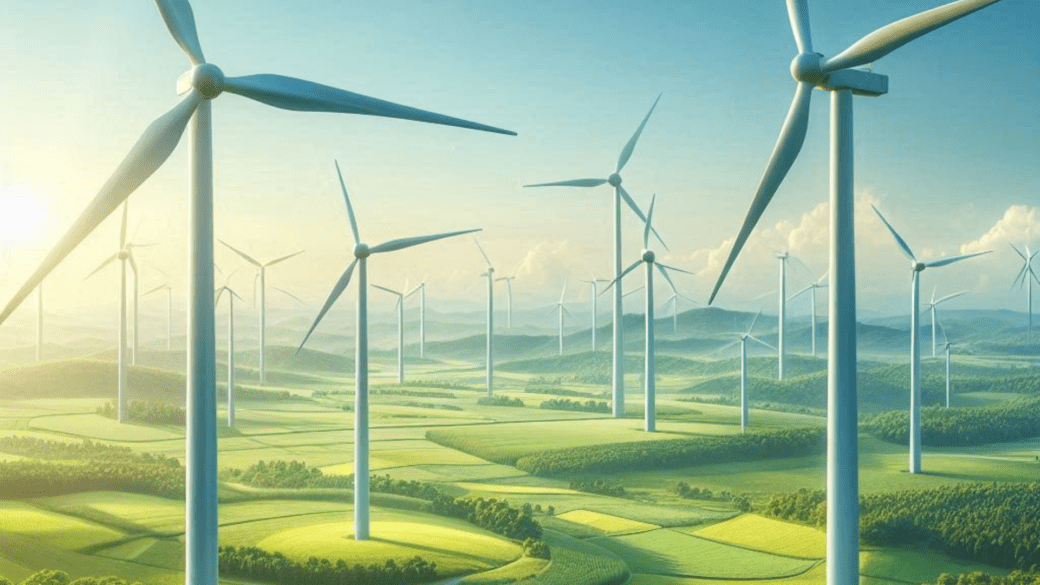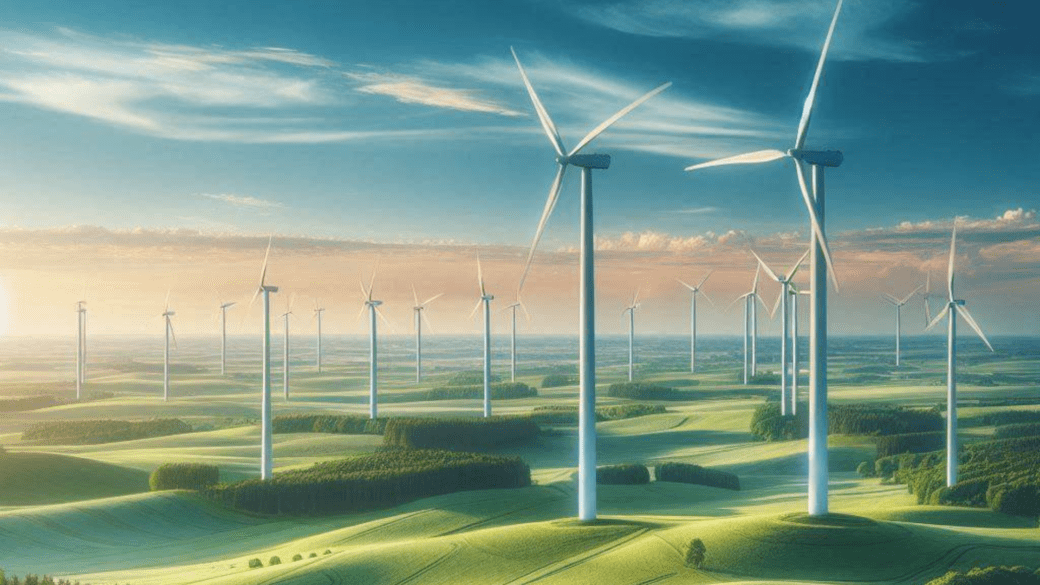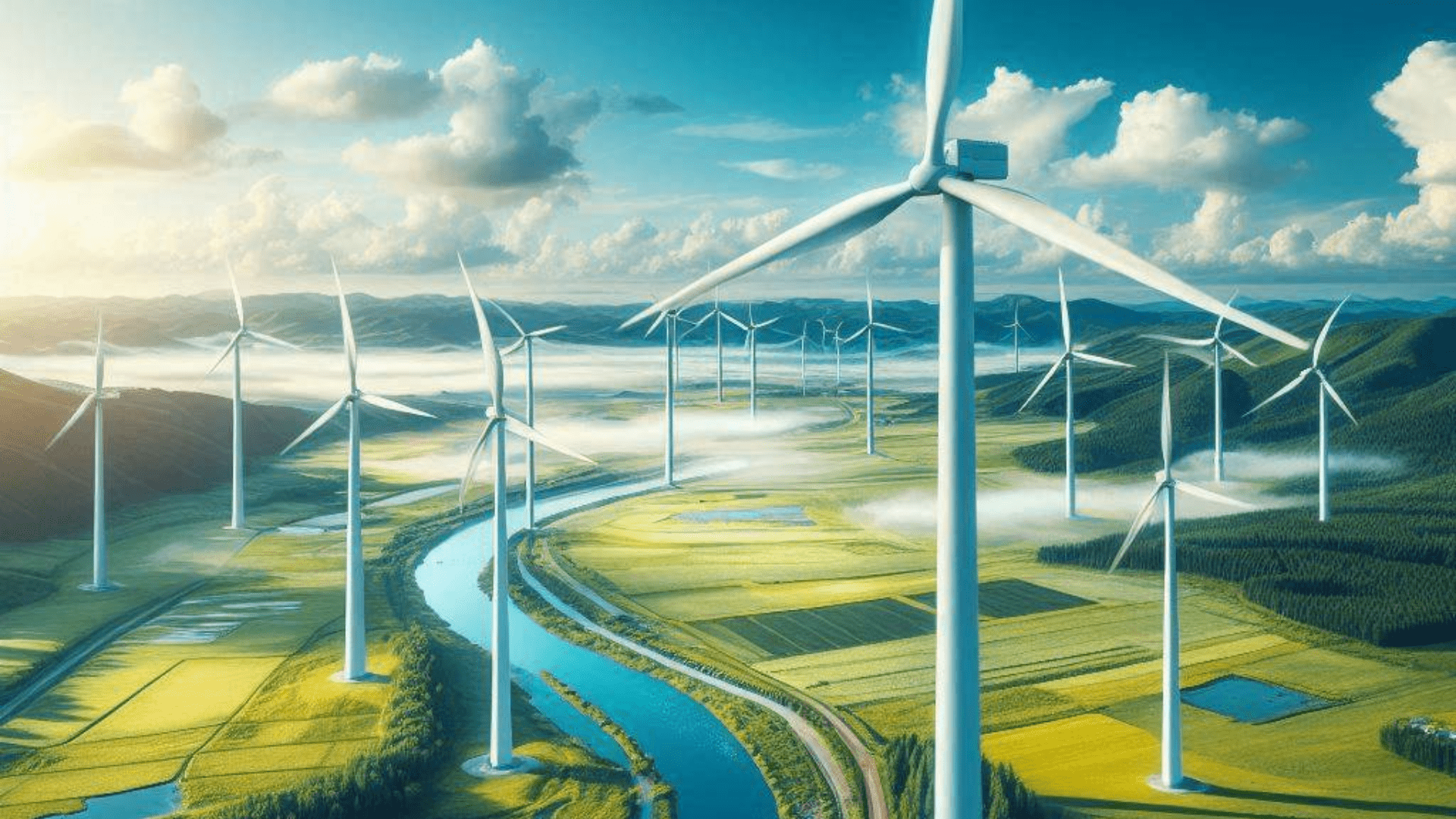Wind farm are collections of wind turbines that work together to produce electricity by harnessing the power of the wind. Think of them as fields of energy generators, where the natural movement of air becomes a sustainable power source.
How Wind Farm Work
Wind energy is essentially the kinetic energy produced by moving air. By capturing this energy through turbines, we convert it into usable electricity.
Wind turbines are designed to spin when the wind blows. This motion generates mechanical energy, which is then transformed into electrical energy through a generator. The electricity produced is sent to a substation and distributed to homes and businesses.
Importance of Wind Farm in Renewable Energy
Wind farms play a big role in creating clean energy. They use the power of the wind to make electricity without polluting the air or using up natural resources like coal or gas. This helps lower harmful gases that cause climate change and makes our planet healthier for future generations. They are an important step toward using energy that doesn’t harm the environment.
What Is Green Technology? Understand In Simple Way
How Wind Farm Generate Electricity
The Role of Wind Turbines
Wind turbines are like giant fans, but instead of using electricity to make wind, they use wind to make electricity. These tall machines are the main players in wind farms, turning the energy in the wind into usable power.
Key Parts of a Wind Turbine
- Blades: The blades work like the arms of a windmill. When the wind blows, they spin around, capturing the wind’s energy.
- Nacelle: This is the “brain” of the turbine. It’s a box on top of the tower that holds the important parts like the generator (which creates electricity) and the gearbox (which helps the blades spin more efficiently).
- Tower: The tall part of the turbine. It holds the blades and nacelle high up in the air where the wind is stronger and steadier.

Conversion of Wind Energy to Electrical Energy
Wind energy is a clean and renewable source of power. The process of converting wind into electrical energy happens in several steps:
- Capturing the Wind: The wind blows and spins the blades of a wind turbine. These blades are designed to catch the wind’s energy and start rotating.
- Generating Mechanical Energy: As the blades spin, they turn a shaft inside the turbine. This motion creates mechanical energy, much like pedaling a bike turns the wheels.
- Converting to Electrical Energy: The spinning shaft is connected to a generator, which uses magnets and coils of wire to turn the mechanical energy into electricity.
- Transporting Electricity: The electricity flows from the generator to a transformer, which adjusts its voltage so it can travel long distances through power lines.
Types of Wind Farm
Wind farms are categorized based on where they are located and how they are used to generate electricity. Let’s break down the three main types in simple terms:
Onshore Wind Farm
Definition and Characteristics
Onshore wind farms are built on land, usually in open areas like plains, hills, or deserts where the wind blows steadily.
Advantages of Onshore Wind Farms
- Lower Installation Costs: Setting up wind turbines on land is cheaper compared to offshore wind farms.
- Easy Maintenance: Workers can easily reach the turbines for repairs and maintenance because they’re on land.
Challenges of Onshore Wind Farms
- Land Limitations: They require large areas of open land, which might not always be available.
- Community Concerns: Nearby residents might dislike the noise or the way the turbines look, which can lead to complaints.
What is LiDAR?; Understand In Simple Way

Offshore Wind Farm
Definition and Characteristics
Offshore wind farms are built in the ocean or other bodies of water, usually far from the shore.
Benefits of Offshore Wind Farms
- Stronger Winds: The wind over water is usually faster and more consistent, which means more electricity can be generated.
- No Land Use Issues: Since they’re in the water, they don’t compete with land needed for farming, housing, or other uses.
Challenges of Offshore Wind Farms
- Expensive Setup: Building turbines in water is harder and costs more than building them on land.
- Difficult Maintenance: Repairs and upkeep are tricky and expensive because workers need boats or special equipment to access the turbines.
- Impact on Marine Life: The construction and operation of these wind farms can affect sea creatures and their habitats.
Distributed Wind Farm
What are Distributed Wind Farms?
Distributed wind farms are small-scale wind energy systems set up close to where the electricity is needed. They are often found in rural areas, small communities, or even on private properties.
Use Cases and Benefits
- Power for Remote Areas: These farms are great for providing electricity to places far from big cities, like farms or remote villages.
- Energy Independence: They reduce the need to rely on large power grids by producing electricity locally.
- Flexibility: Because they’re smaller, they can be installed in many locations without needing huge amounts of land.
Key Components of a Wind Farm

- Wind Turbines
Wind turbines are the main machines that generate electricity. They have large blades that spin when the wind blows, turning wind energy into mechanical energy. This mechanical energy is then converted into electricity by a generator inside the turbine. Each wind turbine works as a small power plant. - Substations
The electricity generated by the turbines needs to be adjusted before it can travel through power lines. Substations are special facilities that take the electricity from the turbines, increase or regulate its voltage, and prepare it for safe and efficient distribution to the power grid. - Monitoring and Control Systems
These systems act like the brain of the wind farms. They keep track of how well each turbine is working, check for any problems, and make adjustments to ensure everything runs smoothly. They also monitor safety and weather conditions, shutting down turbines if needed to prevent damage.
What Is Servers? Understand In Simple way.
Environmental And Economical Impact of Wind Farms
Positive Environmental Effects
- Reduction in Greenhouse Gas Emissions:
Wind farms generate electricity without burning fossil fuels, meaning they produce no greenhouse gases like carbon dioxide. This helps fight climate change by significantly lowering the carbon footprint of energy production. - Sustainable Energy Production:
Wind is a renewable resource that never runs out. By harnessing wind power, we ensure a clean, sustainable source of energy for the long term, reducing reliance on non-renewable energy sources like coal and oil.
Potential Environmental Concerns
- Impact on Wildlife:
Wind turbines can pose risks to birds and bats that might collide with the blades. However, these impacts can be minimized by carefully choosing locations for wind farms and improving turbine designs. - Visual and Noise Pollution:
Wind turbines are large and can change the landscape’s appearance, which some people might not like. They can also produce low-level noise, which could bother nearby communities if not managed properly.
Economic Impact of Wind Farms
- Job Creation:
Building, operating, and maintaining wind farms create many jobs. These include roles in construction, engineering, and ongoing turbine maintenance, providing employment opportunities in local communities. - Energy Cost Reduction:
As wind energy technology improves, it becomes more efficient and affordable. This helps lower the cost of electricity for consumers over time. - Contributions to Local Economies:
Wind farms bring significant investment to the areas where they are built. Local businesses benefit from the increased economic activity, and landowners who lease their land for turbines receive steady income, boosting regional growth.
How To Recycle E-Waste And Save The World.
Challenges in Wind Farm Development

- Finding Space: Wind farms need a lot of open space with strong, steady winds. Finding the right location that meets these needs can be difficult.
- High Costs: Building a wind farms is expensive at the start. This includes the cost of wind turbines, construction, and setting everything up, which can make it hard for some projects to get started.
- Local Objections: Some people in nearby communities might not like wind farms. They may feel the turbines spoil the view, create too much noise, or harm local wildlife. This resistance can slow down or stop projects.
Future of Wind Farm
New Technology
Wind energy is improving thanks to cool new inventions like floating wind turbines that can work in deeper water and better designs that make wind turbines more efficient at generating power.
Offshore Wind Farms Growing
More wind farms are being built in the ocean because they can produce more electricity there, thanks to stronger and more consistent winds.
Government Support
Many countries are creating special programs and offering money or tax breaks to encourage the development of wind energy. This helps make wind power a bigger part of our energy supply.
What Is E-Waste? Solve This For Better Future
Conclusion
Wind farms are an essential part of the global shift to renewable energy. They come in various types—onshore, offshore, and distributed—each with unique benefits and challenges.
As technology evolves, wind farms will play an even greater role in ensuring a sustainable future for energy production.
FAQs
What is the main purpose of a wind farm?
The primary goal is to generate clean and sustainable electricity using wind energy.
How efficient are wind farms?
Modern wind turbines have an efficiency of 35-50% in converting wind energy to electricity.
Are wind farms safe for the environment?
Yes, though they can pose minor risks to wildlife, they significantly reduce carbon emissions.
What are the costs involved in setting up a wind farm?
Costs vary but can range from $1.3 million to $2.2 million per megawatt of capacity.
Which country has the most wind farm?
China leads the world in wind farms installations, followed by the United States and Germany.
